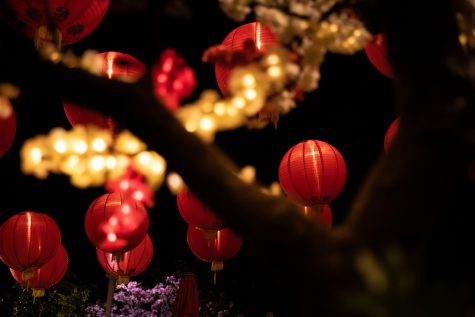Guided by values of togetherness, tradition and prosperity, the Lunar New Year is one of the most honored holidays in Asia and around the world.
Due to the recent Half Moon Bay and Monterey Park mass shootings that disproportionately affected those of Asian descent, the aspect of solidarity in the community has resounded this year more than ever.

Long Beach State is no stranger to its cultural significance. The diverse student body, faculty and staff participate in Lunar New Year festivities both on campus and in their homes.
“By sharing different cultures, it helps other people connect and notice similarities, which then creates a deeper connection amongst each other,” said Lynette Lanh, a student assistant at the Earl Burns Miller Japanese Garden.
Unlike the Gregorian calendar which consistently starts on Jan. 1, the lunar calendar this year began on Jan. 22, and is celebrated for 15 days until the next full moon appears.
“There’s definitely more thought, effort and meaning behind [Lunar New Year],” said Kylie Yam, an undeclared freshman. “We clean the house before the new god comes in as well as driving away the bad luck from the previous year.”
Although commonly called the “Chinese New Year,” the lunar year is also celebrated in different ways across Asian countries including Japan, Vietnam, Indonesia, South Korea and more.

As for food, Yam mentioned the Cambodian dessert “Numkom” as a staple part of her family’s new year dinner, next to many servings of fruit, roasted chicken and duck.
Since Yam is half Mexican and half Cambodian, she had moments of insecurity regarding if she was “Hispanic or Asian enough,” but she finds that abiding with the cultural community during the holidays helps.
“I’ve always felt in touch with my Asian roots because I was raised and spend the most time with that side of my family, but participating in Lunar New Year and TLC (Thai, Laos and Cambodian) New Year definitely reassured me,” Yam said.
A notable on-campus Lunar New Year celebration is held at the Earl Burns Miller Japanese Garden where the students and Long Beach community can experience more of the Japanese traditions.
Known as the “New Year Sekku,” it is one of the garden’s many returning cultural events after COVID.
The event facilitates community connections through activities such as calligraphy tables where attendees can learn how to write in Hiragana or Katakana, opportunities to create Origami, as well as the handing out of red envelopes and goodies for students and families to take home.
“Here at the garden, everyone believes it’s important to reach out to various communities, as it is important to have social connection and a sense of belonging,” Lanh said.




